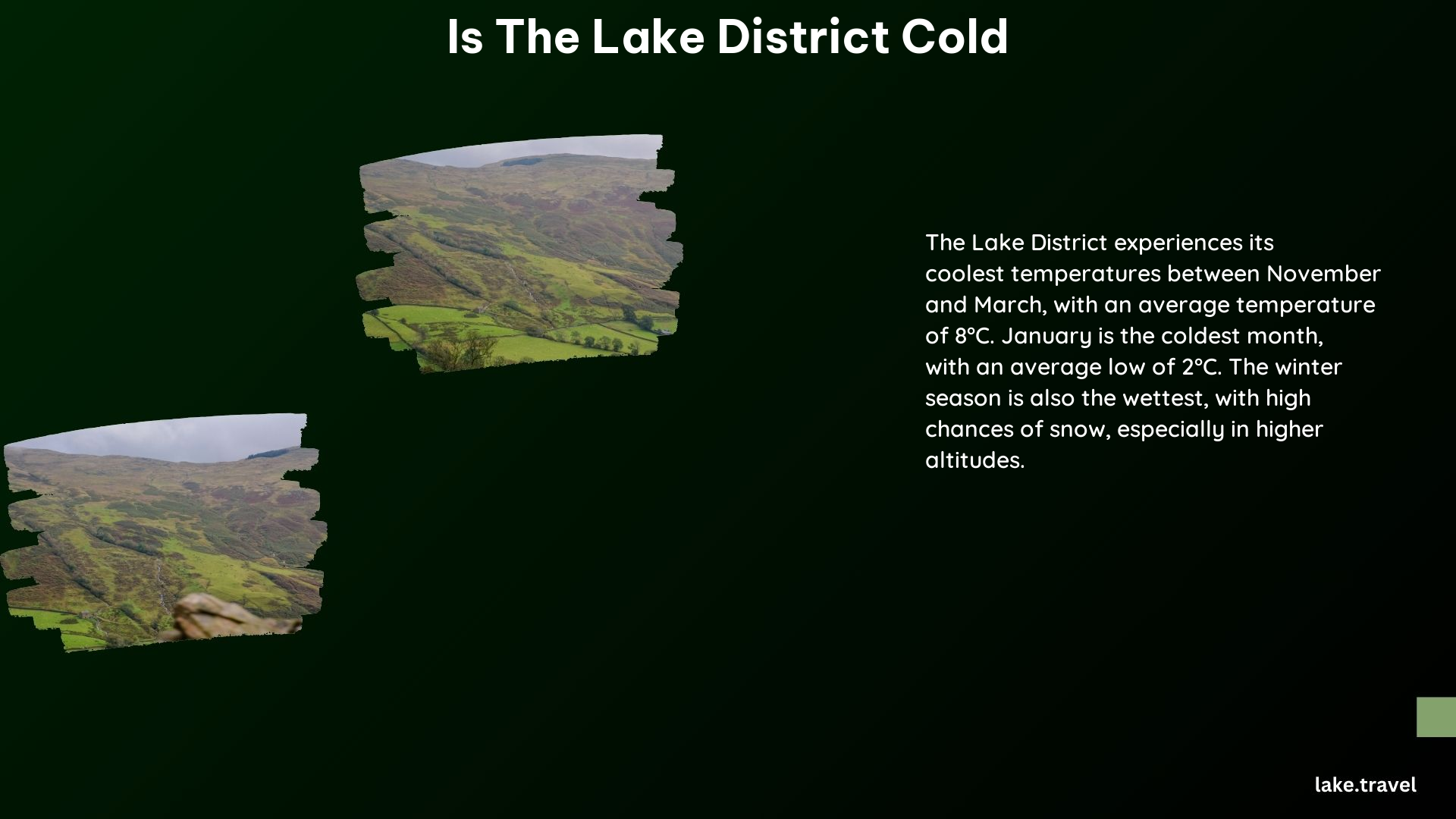The Lake District in England is known for its unpredictable and variable weather, with temperatures ranging from mild to cold throughout the year. While the region can experience chilly conditions, especially during the winter months, the climate is generally temperate and influenced by the surrounding hills and lakes.
Winter Temperatures in the Lake District

During the winter season, from November to March, the Lake District sees its coolest temperatures. The average temperature during this period is around 8°C (46°F), with January being the coldest month, with an average low of 2°C (36°F).
| Month | Average Temperature |
|---|---|
| November | 8°C (46°F) |
| December | 6°C (43°F) |
| January | 2°C (36°F) |
| February | 4°C (39°F) |
| March | 6°C (43°F) |
Daytime temperatures in the Lake District during the winter typically range from around 2°C to 8°C (36°F to 46°F), with temperatures often dipping below freezing overnight.
Spring Temperatures in the Lake District

As the seasons change, the Lake District begins to experience a gradual warming trend. From March to May, temperatures can still be quite cool, ranging from 6°C to 10°C (43°F to 50°F) in early March, and gradually warming up to 15°C to 22°C (59°F to 72°F) by early May.
Summer Temperatures in the Lake District
The warmest temperatures in the Lake District are experienced during the summer months, from May to September. During this period, the average temperatures range from 15°C to 22°C (59°F to 72°F), with occasional hotter days reaching up to 30°C (86°F).
Autumn Temperatures in the Lake District
As the year draws to a close, the Lake District’s temperatures begin to dip again. From September to November, the temperatures range from 10°C to 15°C (50°F to 59°F), with rain showers becoming more frequent and longer in duration.
Climate Impact on Agriculture and Tourism
Agriculture
The Lake District’s climate, with its mild winters and cool summers, is particularly beneficial for sheep farming, which is the main agricultural use of the land. The weather allows for a short growing season, making it difficult to grow arable crops, but the conditions are well-suited for hill sheep.
Tourism
The Lake District’s climate can have both positive and negative impacts on tourism. While visitors often prefer dry, sunny weather, the region’s rainfall helps maintain its lush green valleys and lakes. The unpredictable weather can lead to a mix of good and bad weather during a trip, and some attractions remain open throughout the winter season, catering to visitors seeking a different experience.
In conclusion, the Lake District’s climate is characterized by mild winters and cool summers, with significant rainfall and variable temperatures throughout the year. While the region can experience chilly conditions, especially during the winter months, the overall temperate climate makes it a popular destination for outdoor enthusiasts and nature lovers.
Reference:
– Lake District Weather and Climate
– Climate of the Lake District
